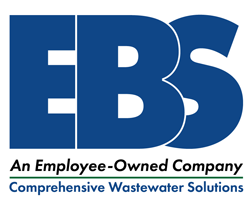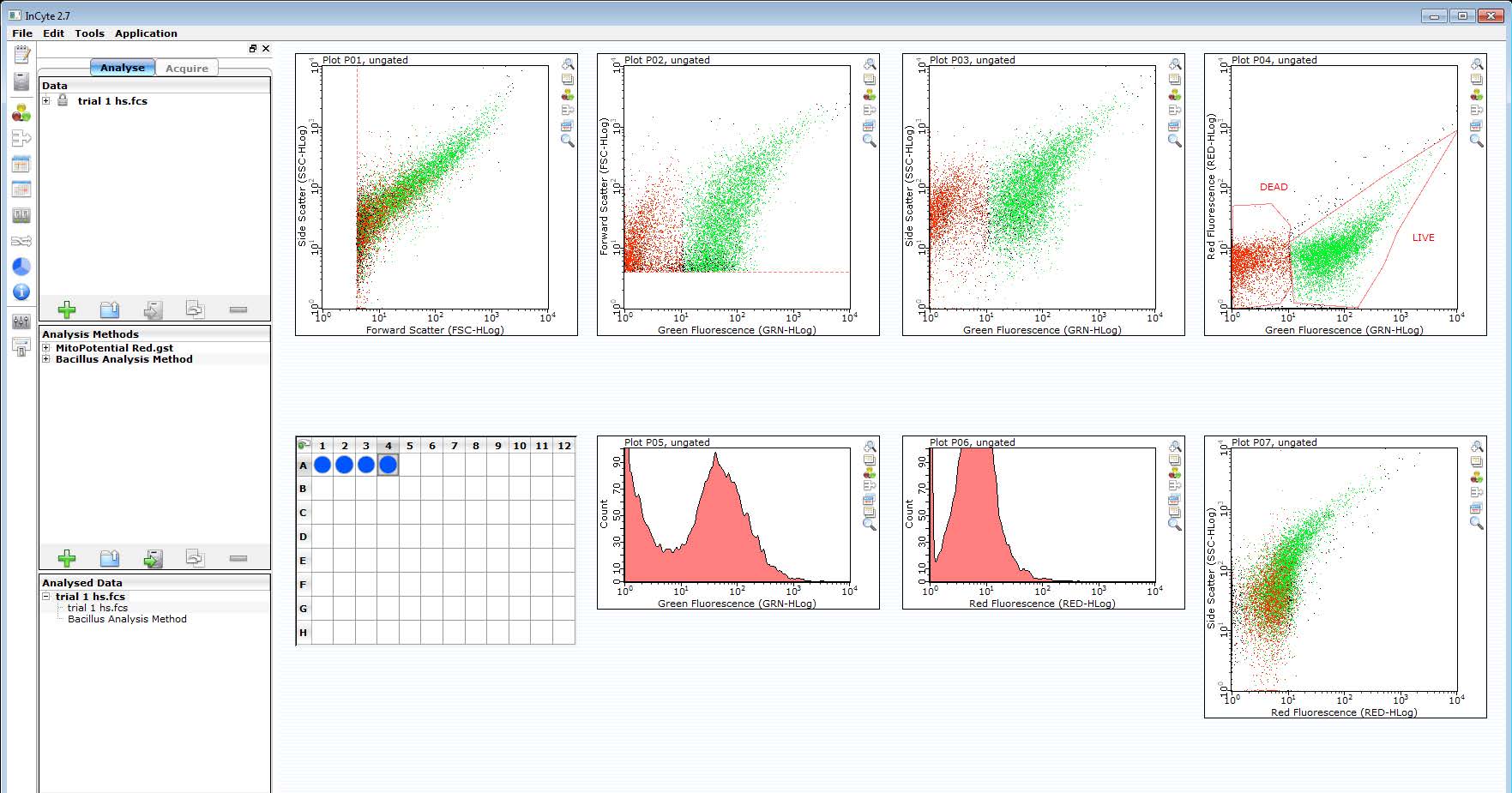A NEW TAKE ON AN OLD MEASUREMENT
At Environmental Business Specialists LLC (EBS), we continually search for ways to enhance our laboratory tests to not only suit our diverse client needs but to provide them with more accurate and timely results which they can use to make better decisions regarding their wastewater treatment plant. Flow cytometry is commonly used in the medical field to generate accurate counts of specific cells of interest using fluorescent stains. EBS has adapted this technology for use in counting bacterial cells, taking bacterial health assessments to the next level in the wastewater treatment industry.
By utilizing two fluorescent stains in combination (one that can penetrate cell membranes and one that cannot), the flow cytometer can differentiate between live and dead cells by analyzing which stain they have taken up. Advanced optics comprised of special lasers and mirrors allow the flow cytometer to read the fluorescence of each cell and plot the fluorescence on a diagram. Results can be ready within an hour of sample receipt; much faster than the 48 hours it takes to grow bacteria using a traditional plate count method. In addition, due to limitations in agar type, traditional plate counts only account for around 1-5% of all bacteria present in a given sample, as opposed to the flow cytometer which incorporates all cells.
A healthy bacteria population is a key component of success for biological wastewater treatment. Only live bacteria are capable of BOD degradation and every system has a different proportion of live bacteria. Knowing what is normal for a given system allows for a quick assessment of bacterial health during both normal and upset operating conditions.
The flow cytometer enhances our opportunity to further explore and understand the effect of industrial process chemicals on the bacterial population within a wastewater treatment system in a multitude of applications. The data provided by flow cytometry allows operators, environmental staff, and managers to not only manage the compliance aspect of their plant better, but it also enables them to make more informed business decisions regarding the plant’s operation and future needs.

